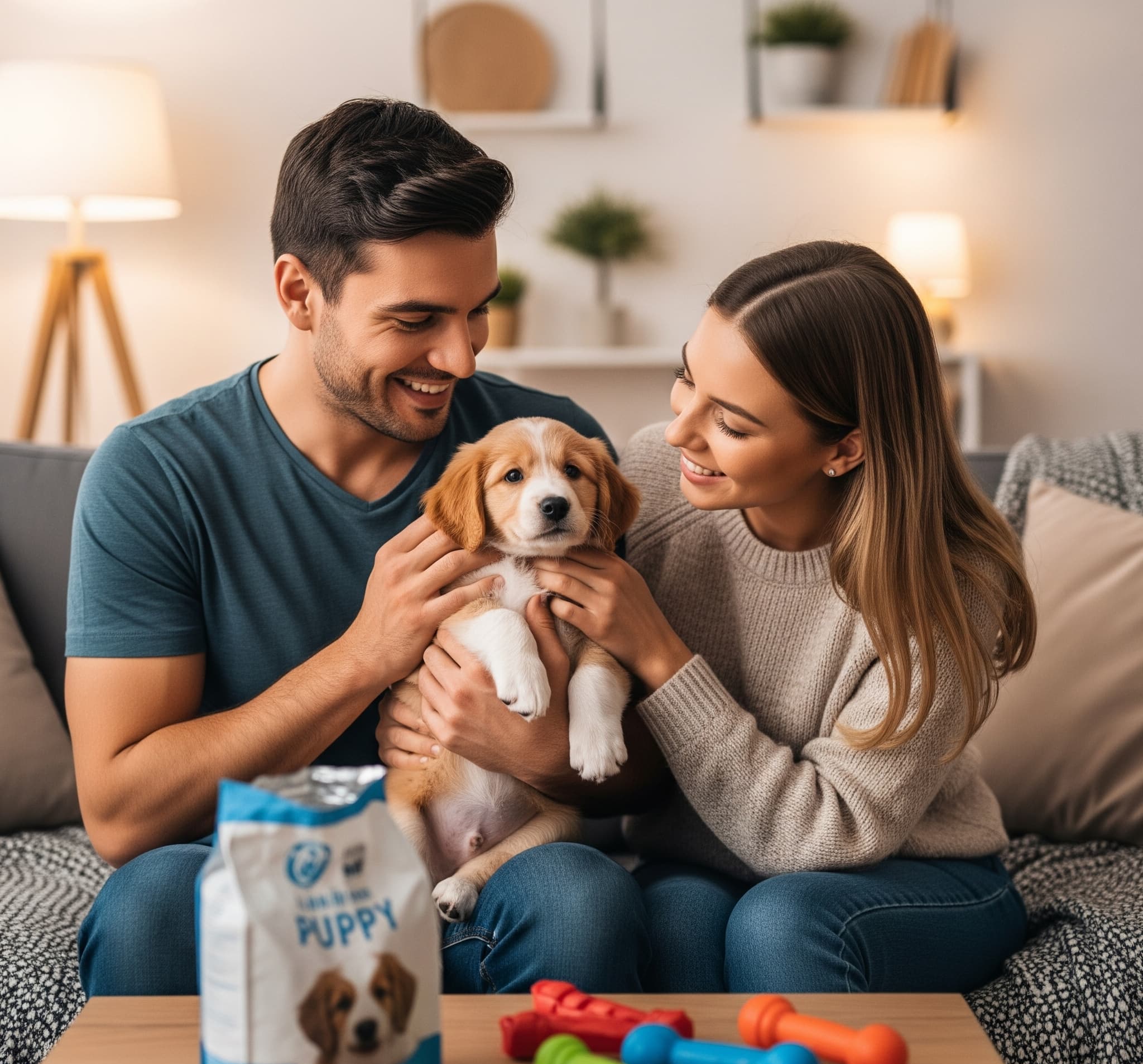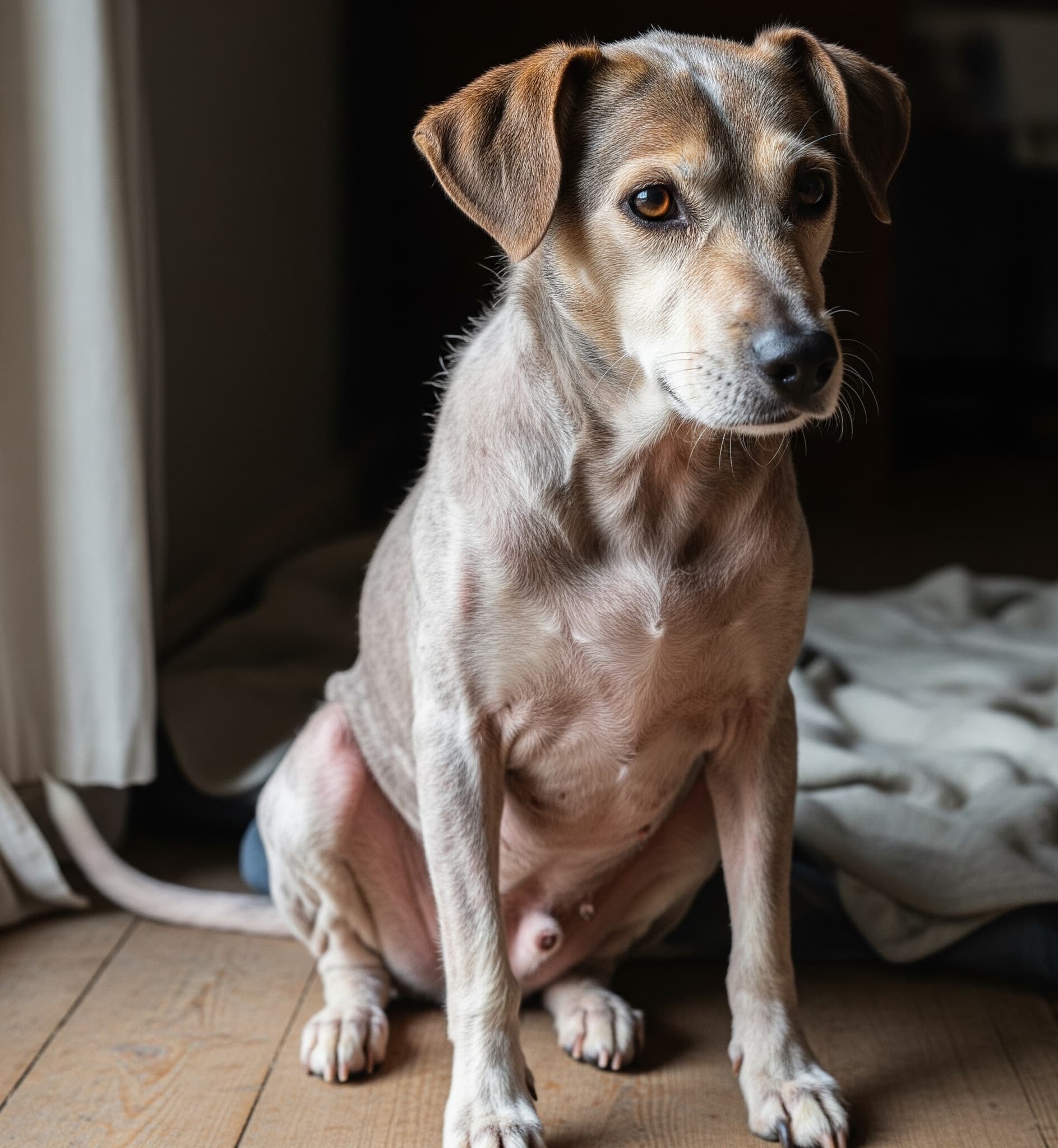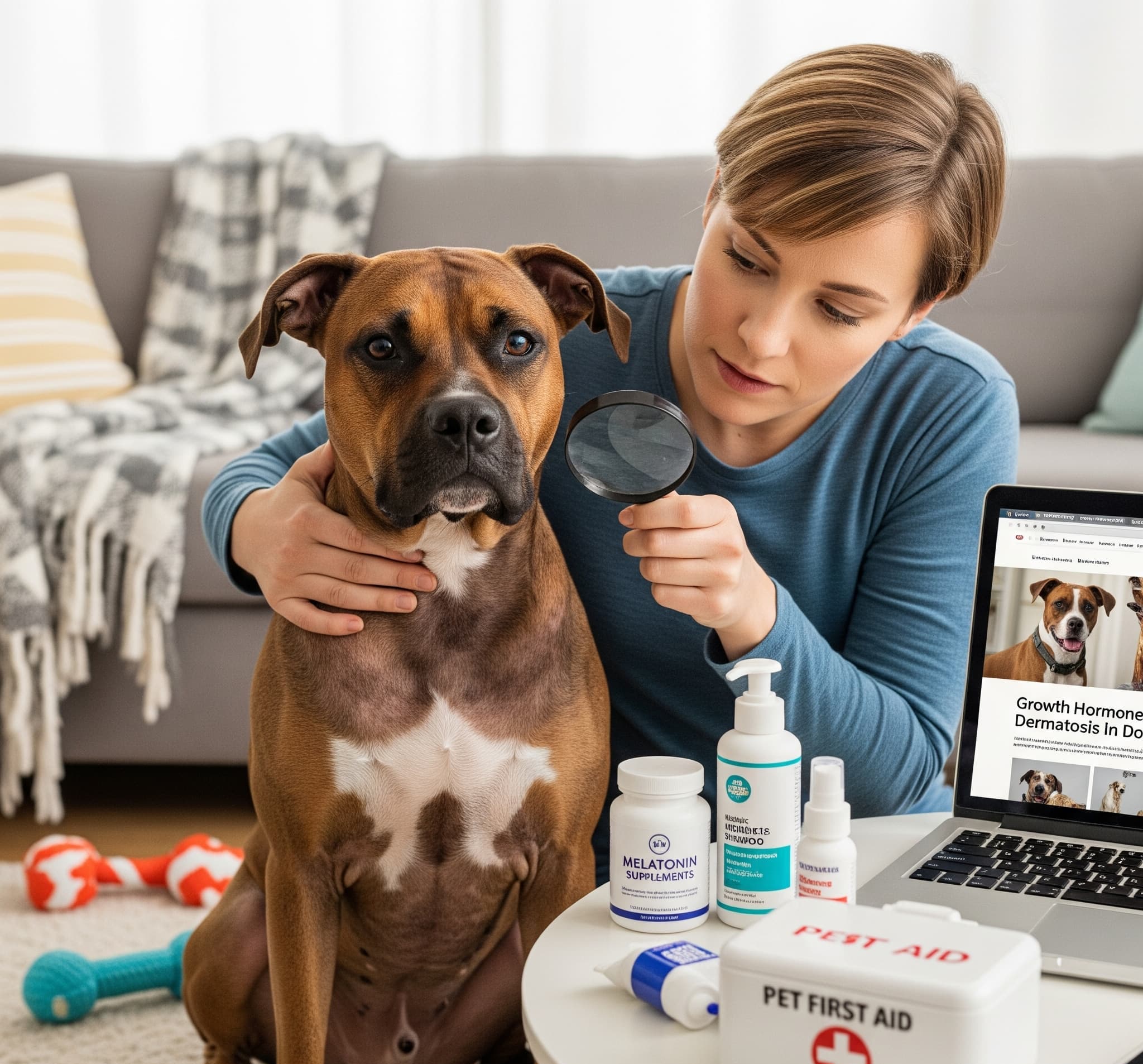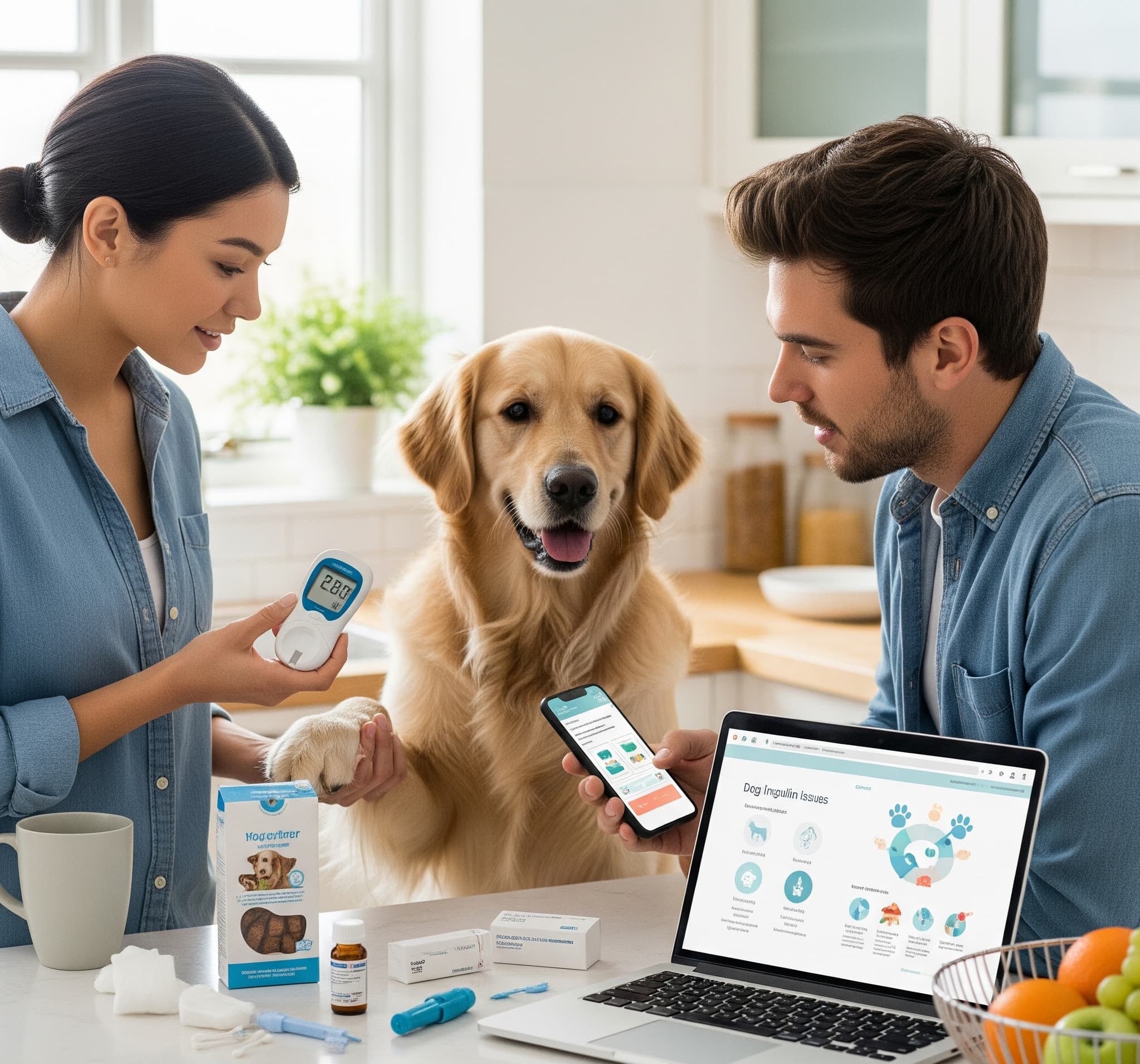New Dog Parents: Simple Breakdown of Grade 3 Spinal Herniation Treatments
Learn how to help your pup bounce back after Grade 3 disc herniation. Fast, simple tips that work! Ready? Let’s get started!
Introduction
Hi, concerned dog parents! Is your pup limping, crying when they move, or acting withdrawn? It’s heartbreaking to see. Your vet may have told you it’s Grade 3 disc herniation—perhaps you felt lost. I’m here to lighten your load. Together, we’ll unpack what Grade 3 IVDH really means and how you can be your dog’s best at-home hero. Picture this as your step-by-step map back to happy, carefree tail wags.
Here’s the plan:
- What Is Grade 3 Intervertebral Disc Herniation?
- Why Is My Dog Dealing with Grade 3 IVDH?
- How We Treat It: From Quiet Time to the Operating Room
- TLC Tips for the Recovery Journey
- Your Top Questions Answered
Let’s get to work.
What Is Grade 3 Intervertebral Disc Herniation?
Picture your dog’s spine as a tower of pancakes with soft jelly-filled pads in between. These pads are the intervertebral discs, and they let your dog bend, stretch, and rocket after tennis balls. When a disc gets hurt, it can bulge or break open, pushing on the spinal cord. That’s intervertebral disc herniation, or IVDH for short.
Grade 3 is smack in the middle of a one-to-five scale vets use to rate the damage. With Grade 3, your dog probably moves a little funny, may flinch when you touch the back, and might sway when they walk. They can still stand and wag, so it’s not as dire as Grades 4 or 5, but it’s still not the happy wiggle you want to see. The good news? With the right tools and a little patience, a lot of dogs turn the corner and hop back to the park.
Dachshunds, French Bulldogs, and Corgis often end up dealing with this because their long bodies and little legs put stress in the wrong places. Still, any dog can end up in this boat, especially if they love to run hard or are edging into middle age.
Why Does My Dog Have Grade 3 IVDH?
So, why is your buddy limping? Think of it like rolling your ankle; it’s usually a clumsy moment combined with a few built-in weaknesses. The big players are:
Breed: Those charming little legs weren’t made for long backs. Bulldogs and Dachshunds are the poster pups because their frames twist and bend a little too much.
Age: Dogs in the 4 to 8-year range start to lose the spring in their discs, and that’s when things slide out of line.
Injury or Overdoing It: A sudden leap to chase a squirrel can crank a disc out like pulling a loose plug.
Weight: Extra pounds mean the spine has to lift a heavier load all day, and that adds up.
If the vet named Grade 3 IVDH, they probably poked and prodded, shot some X-rays, and maybe ran a quick MRI. The silver lining? Grade 3 is not a dead end; with the right moves, your pup can bounce back. Let’s outline the next steps.
How We Treat It: From Quiet Time to the Operating Room
Here’s where hope wags its tail. Grade 3 intervertebral disc disease (IVDH) offers a few ways to help your dog, and the right one hinges on your pup’s signs, your wallet, and your vet’s advice. Let’s cut it into snack-sized pieces that are easy to chew.
Conservative (Non-Surgical) Treatment
For a lot of Grade 3 pups, the starting line is gentle and hands-off. Think of it as a smart, short hibernation that lets the spine fix itself. Here’s the playbook:
Solid Rest: Crate time is non-negotiable for 4 to 6 weeks. No mad leaps, no chases, no flights of stairs. It feels like a snooze-a-thon, but it’s really a spine-saving slow dance. A crate, an exercise pen, or a calm little nook works best.
Medications: Your vet might hand over anti-inflammatories (steroids or non-steroids) to cool the heat in the disc and a pain reliever to dial down the ouch. Muscle relaxers could step in, too, if the back feels like a tight coil.
Physical Therapy: Light leash walks and, if your budget lets you, hydrotherapy—your dog walks on a treadmill under warm water—build muscles without jostling the back. Look for a canine hydrotherapy video on YouTube for a little sneak peek. It’s like a gentle, magical gym session.
About 50 to 70 percent of Grade 3 dogs wag their tail at the end of this road, especially if you spot the problem early. It’s easier on the bank account than a scalpel dance.
Surgical Options
When rest and meds fall short, or when your dog’s wobbling legs or crying pain say it’s time to act, surgery may be what’s needed. Think of it as changing a tire—the piece that’s gone wrong gets lifted away so your pup can roll straight again.
Hemilaminectomy is the go-to surgery for disc troubles. The surgeon removes a small flap of the herniated disc so the spinal cord gets breathing room again.
Cost: Expect to pay anywhere between $3,000 and $8,000 based on your region and the case’s twist and turns.
Recovery: Most dogs start to step with more confidence in a week or two, but the full bounce-back—running and jumping again—takes 8 to 12 weeks.
The odds of coming through strong, especially for a Grade 3 disc issue, hit 85 to 90 percent. Still, it’s a serious step. Make a list with your vet of the small but real risks—like infection or the need for extra follow-up appointments.
Alternative Therapies
Lots of fresh dog parents like to mix in gentle options along with conventional meds and rehab. These feel great but should ride in the back seat, never the driver.
Acupuncture: Thin needles, carefully placed, can take the edge off pain and calm the angry nerves. It’s like pushing the mute button on a loud radio.
Laser Therapy: A gentle light beam warms and speeds along healing without any cuts or drugs, like a long, kind hug on your dog’s back.
Chiropractic Care: A vet with special training can lightly nudge a stiff joint back into place, and suddenly the dog that hesitated to hop off the couch is back at the door with the ball.
Even the best home helpers can make a recovery harder if the vet hasn’t given the green light first. Think of these tips as sprinkles—they add cheer, but they’re not the foundation of healing.
TLC Tips for the Recovery Journey
You’re the best teammate your pup could ask for, and recovery is one walk, one meal, and one soothing pat at a time. Here are the plays that make winning easier for both of you:
Crate rest is non-negotiable. Your dog is safer and happier in a snug crate or a small gated area when you can’t supervise. Potty breaks on a short leash are a must, but save the zoomies for later.
Pain control is the secret sauce. Tiny pills and timed gels go in exactly when the vet said, and nothing more or less. Skipping even one is like forgetting the milk in the coffee.
If your dog is carrying extra weight, the vet will help you swap kibble for something lean and shave off empty calories—yes, fewer treats. The spine will thank you for every gram you leave off the bowl.
Track the little victories. A straighter walk, softer sighs, or even a longer blink means you’re on the right path. If the improvements hibernate for more than two weeks, the vet wants to hear about it.
Rest doesn’t mean boredom. A slow puzzle feeder or a game of hide-and-sniff is like a Netflix binge for the nose. Keeps the mind tired, so the body can rest.
Some days will crawl, and that’s fine. Celebrate every tiny blast of progress—like the tail that forgot it was supposed to be still—like you just found the first five bucks in your winter coat.
Frequently Asked Questions (FAQ)
Can My Dog Fully Recover from Grade 3 IVDH?
Absolutely! Many dogs bounce back completely. With the right care, roughly 80% of Grade 3 dogs show major improvement. Surgery tends to speed things up, but if the pup isn’t paralyzed, conservative management can work wonders. Just give it time, and stay consistent.
How Much Will Treatment Cost?
Costs vary quite a bit. Go the conservative route, and you might spend between $500 and $2,000 on medications, check-ups, and maybe rehab. If the vet recommends surgery, be prepared for $3,000 to $8,000. Checking your pet insurance to see if it covers IVDH can really lighten the load.
How Do I Prevent This from Happening Again?
Maintaining a healthy weight is job one. Pair that with leash walks instead of free running, low stairs, and ramps to keep joints soft. Avoid letting your pup leap off couches or balconies. Yearly check-ups also give the vet a chance to spot early back changes.
Is My Dog in Pain?
A Grade 3 pup usually feels discomfort similar to a cranky back. Look for the telltale signs—yipping when picked up, sneaking off to hide, or refusing to play. Pain meds, strict rest, and short potty trips usually calm things down. If you’re worried, one more vet visit won’t hurt.
Conclusion
A Level 3 disc blowout may sound heavy, but you are totally equipped to handle it! Rest, an operation, bodywork, or any combo—what matters is getting that silly, floppy-eared, zooming friend back to full-speed puppy-hood. Check in with your vet to craft the right recipe, keep the blankets cozy, stick to the game plan, and cheer for every wag in the right direction.
Got something on your mind about your dog’s bounce-back? Message me in the comments—I’d love to lend an ear! Fancy more tips to keep that tail up and body healthy? Sign up for the newsletter, and the good stuff will land in your inbox each week. If this guided your path, pass it to other dog moms and dads flying the same journey!




Post Comment